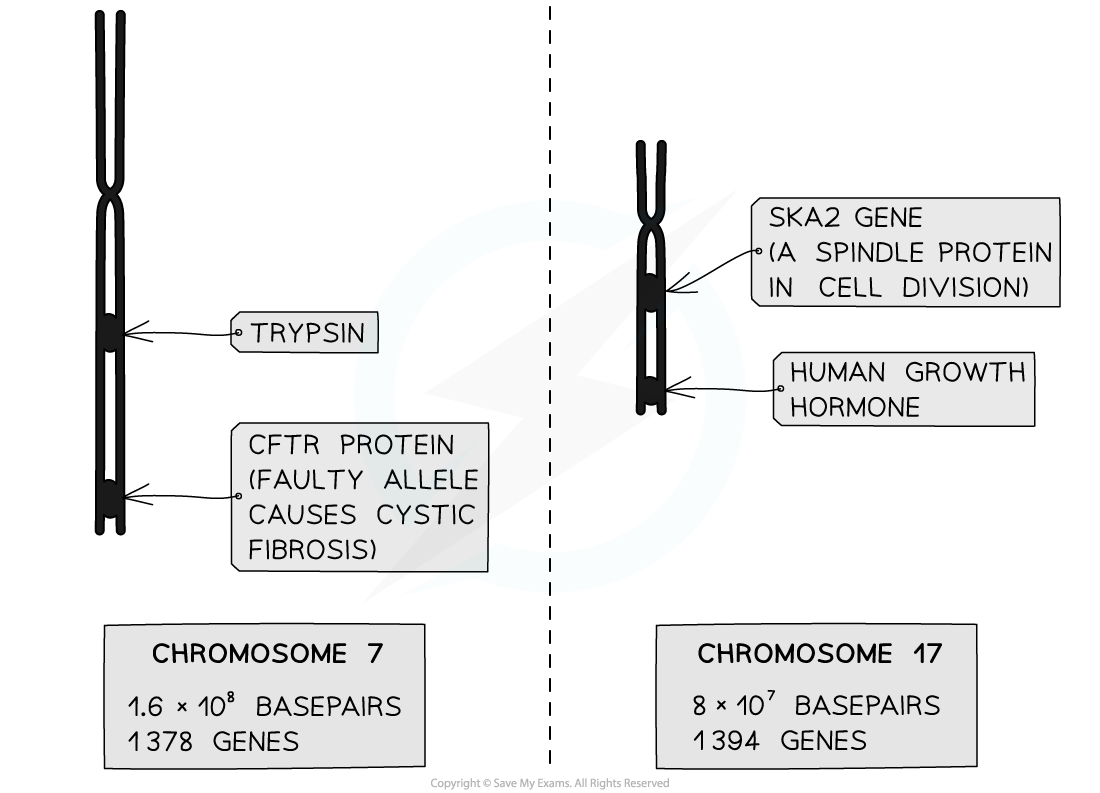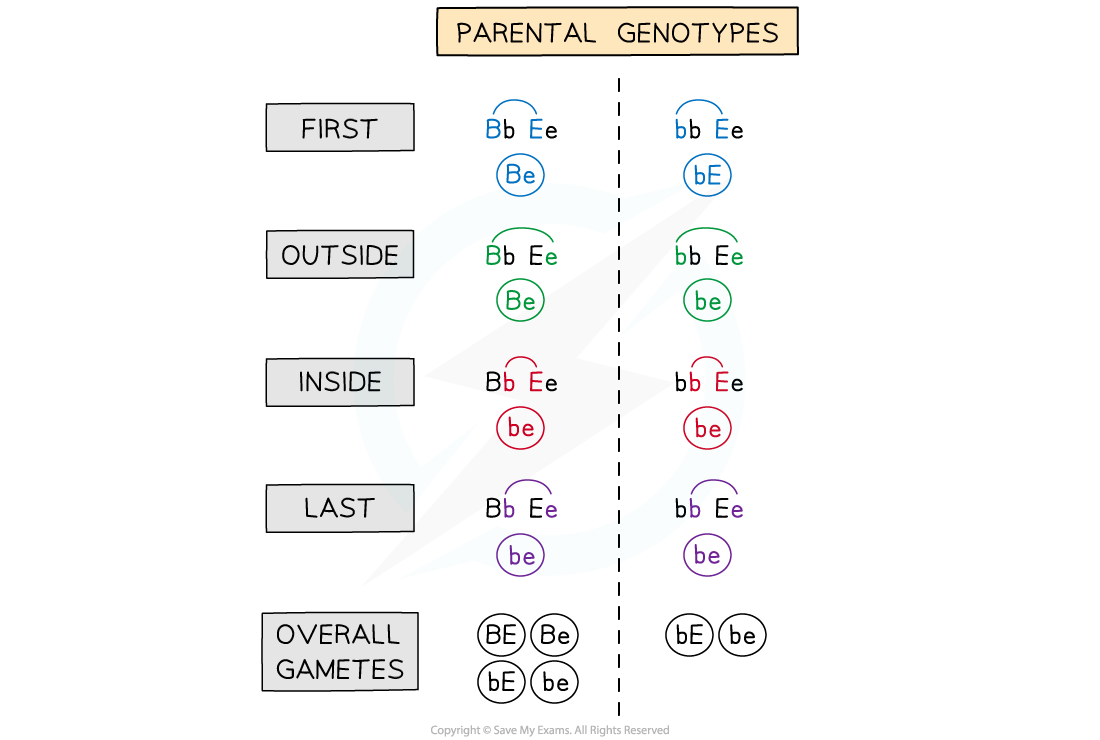Independent Assortment & Segregation
Unlinked genes segregate independently as a result of meiosis
- Unlinked genes are genes that an organism carries on separate chromosomes
- Not on homologous copies of the same chromosome
- An example of a pair of unlinked genes in fruit flies (Drosophila melanogaster) is
- The gene for curly wings on chromosome 2, and
- The gene for mahogany eyes on chromosome 3
- An example of a pair of unlinked genes in humans is
- The gene for trypsin (a stomach enzyme) on chromosome 7, and
- The gene for human growth hormone on chromosome 17
- Assortment of chromosomes refers to their alignment in metaphase I of meiosis
- Each bivalent assorts (aligns) itself independently of all the others
- Segregation of chromosomes (ie. how they get separated) is governed by their pattern of assortment
- Segregation just refers to which pole of the cell the whole chromosomes are pulled to in anaphase I
- Segregation determines which combinations of alleles end up in which gamete cells by the end of meiosis II
- By contrast, linked genes (on the same chromosome) tend to be inherited together

The loci of selected genes in the human genome
Trypsin and CFTR are linked genes (both on the same chromosome);
Human Growth Hormone and trypsin are unlinked genes (both on different chromosomes)
Punnett Squares for Dihybrid Traits
- Monohybrid crosses look at how the alleles of one gene transfer across generations
- Dihybrid crosses look at how the alleles of two genes transfer across generations
- ie. dihybrid crosses can be used to show the inheritance of two completely different characteristics in an individual
- The genetic diagrams for both types of cross are very similar
- For dihybrid crosses, there are several more genotypes and phenotypes involved
- When writing out the different genotypes, write the two alleles for one gene, followed immediately by the two alleles for the other gene.
- Do not mix up the alleles from the different genes
- For example, if there was a gene with alleles Y and y and another gene with alleles G and g an example genotype for an individual would be YyGg
- Alleles are usually shown side by side in dihybrid crosses e.g. TtBb
Worked Example
Worked example 1: Dihybrid genetic diagram
- Horses have a single gene for coat colour that has two alleles:
- B, a dominant allele produces a black coat
- b, a recessive allele produces a chestnut coat
- Horses also have a single gene for eye colour
- E, a dominant allele produces brown eyes
- e, a recessive allele produces blue eyes
- Each of these genes (consisting of a pair of alleles) are inherited independently of one another because the two genes are located on different non-homologous chromosomes
- Such characteristics are said to be unlinked
- In this example, a horse that is heterozygous for both genes has been crossed with a horse that is homozygous for one gene and heterozygous for the other

Determining the Alleles Carried by Gametes Based on the Parental Genotypes Using the FOIL (First, Outside, Inside, Last) Method
Dihybrid Cross Punnett Square Table
- Predicted ratio of phenotypes in offspring =
- 3 black coat, brown eyes :
- 3 chestnut coat, brown eyes :
- 1 black coat, blue eyes :
- 1 chestnut coat, blue eyes
- Predicted ratio of genotypes in offspring = 3 BbEE : 3 bbEE : 1 Bbee : 1 bbee
Worked Example
Worked example 2: Dihybrid genetic diagram
In a separate cross to that shown in Worked Example 1, a horse that is heterozygous for both genes has been crossed with another horse that is heterozygous for both genes.
Dihybrid Cross Punnett Square Table 2


- Predicted ratio of phenotypes in offspring =
- 9 black coat, brown eyes :
- 3 chestnut coat, brown eyes :
- 3 black coat, blue eyes :
- 1 chestnut coat, blue eyes
Exam Tip
For the double-heterozygous cross for unlinked genes above, you're expected to remember the phenotypic ratio 9:3:3:1. You won't need to remember the ratio of the genotypes but this can be worked out from a Punnett square like the one above.
